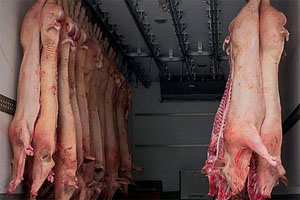South Korean pork market volatile

Volatile is one way to describe the pork market in South Korea. For the past several years, US pork exports to this country have experienced peaks and valleys driven, to a great extent, by changing market conditions within Korea.
The first quarter of 2014 has been promising, with US pork sales to Korea climbing 15 percent in volume and 21 percent in value to 40,143 metric tons (88.5 million pounds) valued at $116.2 million. March was a strong month, with growth of 73 percent in volume and nearly 83 percent in value.
The United States share of the pork export market to Korea also has grown, from 34.4 percent last year at this time to 36.7 percent this year. That is a positive development that is being supported by new USMEF initiatives in Korea, but conditions within the country will make it challenging for all imported pork products in the months ahead.
The mid-April ferry disaster off the southern coast of Korea, which claimed 276 lives and left several dozen people still unaccounted for, has led to a national state of mourning. That single event has created a domino-like series of effects that continues to affect the pork industry as well as the overall economy.
In the aftermath of the accident, the Korean Government canceled national festivals while the country mourns. In parallel developments, local festivals have been canceled, all school field trips have been halted by the Ministry of Education and many company outings and events have been canceled.
The increase in pork purchases in Korea in the weeks leading up to the spring event season are largely sitting in cold storage, which will put a damper on near-term purchases. The overall downturn in economic activity has been attributed to “vicarious trauma,” and the government is looking at steps to invigorate consumption, particularly to support the small and medium-size businesses that are being affected. On the positive side, a cluster of three holidays in the first week of May has helped boost retail and food service purchases.
The ferry disaster is not the first event to impact the Korean pork market this year. There is a lingering PED virus issue – which has affected the Korean industry for a number of years – that has resulted in an estimated 5.1 percent of piglets lost during the first quarter of 2014. By all indicators, the virus peaked in February and has declined sharply since then but, as in other countries with PEDV, there is always a risk of reoccurrence.
According to the Korea Rural Economic Institute (KREI), domestic pork production is down 4 percent from 2013 levels, a decline considered “not significant.” The Korean Government has allocated funds to support the cost of PEDV vaccines for local farmers, but many have complained that the vaccine has not been effective.
Higher pork prices have encouraged pork producers to increase the swine herd once again – as they did in the aftermath of the 2010-2011 FMD outbreak – which likely will contribute to another domestic oversupply situation. We will continue to watch that closely.
In the meantime, there are niches in the Korean pork market that we continue to aggressively pursue for US pork exports. Those include:
• Chilled pork – the US has an advantage over the European Union, which cannot provide chilled product because of transportation challenges. Chile has not been a substantial player in this segment, and Canada has lost half of its volume year-over year, in great part because it does not have a free trade agreement with South Korea. While dealing in smaller numbers – about one-quarter the size of US chilled pork exports – Mexico has seen its chilled sales jump 63 percent in the past year.
USMEF is workng closely with Korean retailers, such as Home Plus, to expand chilled pork sales to year-around. Branded pork sales remain a target on the horizon. Korea follows behind the Japanese retail market in this regard, but it will be a focus in the future.
Source: USMEF











